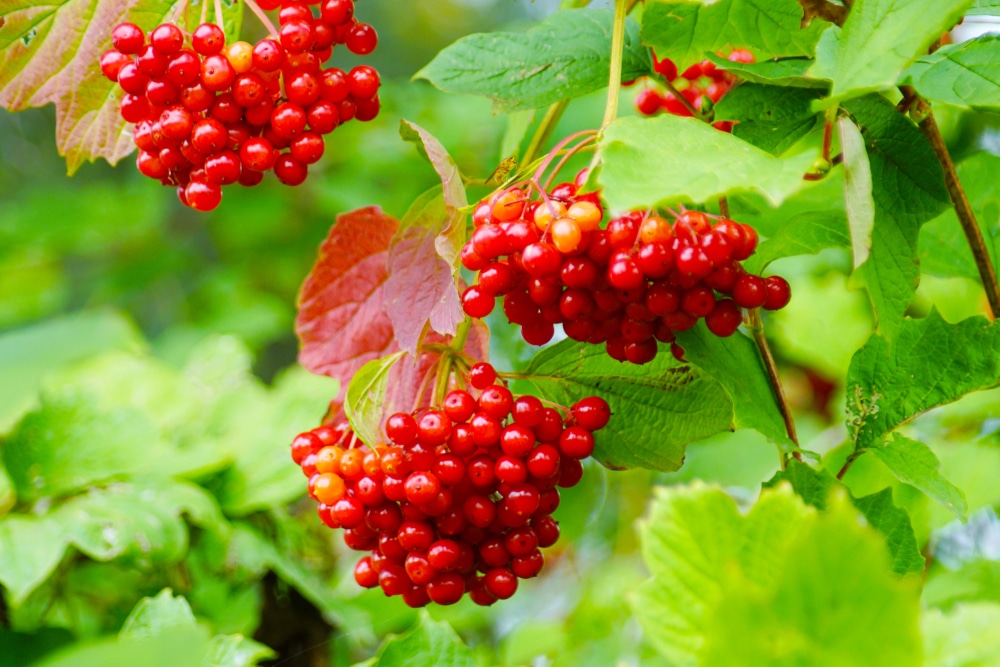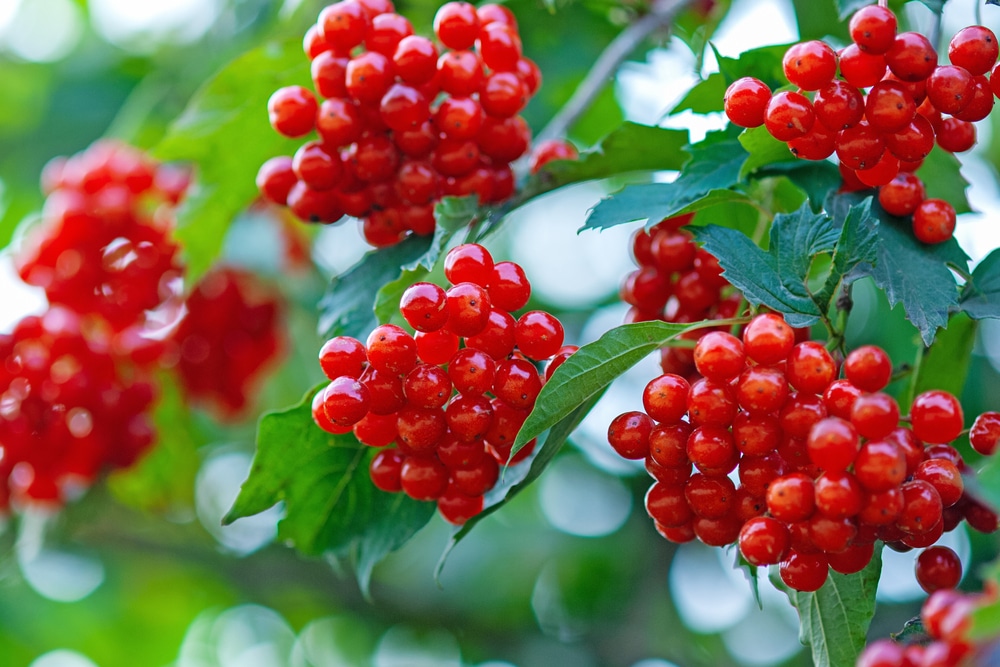An attractive and well-groomed European Cranberry Bush in your garden can create an eye-catching focal point. These beautiful shrubs can add a splash of color to any garden given the right care and are relatively easy to maintain. Here’s everything you need to know about European Cranberry Bush care.
| Botanical Name | Viburnum Opulus’ Compactum’ |
| Common Name | European Cranberry Bush |
| Plant Type | Perennial |
| Flower Color | Small white lacy flowers |
| Size When Mature | 96-120 inches |
| Bloom Time | Spring |
| Sun Requirements | Full to Partial Sun |
| USDA Hardiness Zones | 4 – 8 |
| Soil PH Range | 4.5 – 8.0 |
| Soil Type | Acidic, Neutral, Alkaline, Humusy, and Well-draining |
| Water Needs | Low to Medium |
| Native Area | Europe |
What You Need to Know About European Cranberry Bush
The European Cranberry Bush is a deciduous shrub that is native to Europe. The plant can grow 96-120 inches tall. It is a member of the Moschatel family and has simple, dark green leaves that turn red in the fall. The leaves are arranged in pairs along the stems and are toothed along the edges.
The flowers that the plant produces are small, white, and lacy. Additionally, they appear in clusters during late spring. They are followed by bright red berries that ripen in fall and can last through the winter months.
The fruits the plant produces are edible but mildly toxic if consumed in high quantities. In addition, they have a sour taste and are often used in jams, jellies, and pies.
It is easy for a new gardener to care for the plant. However, it is important to note that the plant does have some specific needs that must be met for it to thrive.
How to Care for European Cranberry Bush
Here’s everything you need to know about growing and caring for a thriving European Cranberry Bush:
Light
The European Cranberry bush loves the full sun and does best when it receives at least six hours of sunlight each day. However, even if the plant is not receiving enough sunlight, it will still grow, albeit more slowly.
Water and Soil Needs
Watering the plants is one of the most important aspects of care. The European Cranberry Bush needs to be watered deeply and frequently during the hotter months of the year. However, during the cooler months, the plant only needs to be watered every two weeks. Keeping the plant’s soil moist will be key to its success.
In terms of soil, the plant prefers moist, well-draining, and humusy soil. However, the plant is adaptable and can grow in various soil types as long as it is not waterlogged. It can grow in soil with a pH range of 4.5-8.0.
Temperature Requirements
This bush is not tolerant of extreme cold or heat and is hardy in USDA zones 4-8. The plant can withstand temperatures as low as -40 degrees Fahrenheit. Additionally, the plant is drought-tolerant after it becomes established.
Fertilizer
The best fertilizer to use on a European Cranberry Bush is a water-soluble fertilizer that is high in nitrogen. Having a high nitrogen content will ensure that the plant will have lush, green growth. However, too much nitrogen can result in the plant having fewer flowers. Fertilizing this plant during spring is the best time to do so.
Common Diseases
Although tough and hardy to most weather changes, this bush is susceptible to a few diseases. These include red leaf spot, proventuria leaf spot, and early leaf spot.
Red leaf spot is a fungal disease that can cause brown or red spots to form on the plant’s leaves. The spots are usually surrounded by a yellow halo.
Proventuria leaf spot is another fungal disease that can cause brown or black spots to form on the plant’s leaves. The spots are often a nuisance but do not usually kill the plant.
Like the other two mentioned diseases, early leaf spot is a fungal disease that can cause spots to form on the plant’s leaves. The spots are usually small and round and can be either brown or black in color.
To avoid the diseases mentioned, make sure to water the plant at the base, avoiding the leaves as much as possible. The moist leaves are the perfect breeding ground for these diseases. In addition, make sure to clean up any fallen leaves as soon as possible to prevent the spread of fungal diseases.
European Cranberry Bush Propagation
The European Cranberry Bush can be propagated easily. It can either be done through stem cuttings or seedlings.
For seedlings, this might be more difficult as the plant does not produce a lot of seeds. Collecting the seeds can be done by waiting for the fruits to ripen and then taking them off the plant. Once the seeds are collected, they need to be planted immediately as they will not last long.
Using stem cuttings is the more common method of propagation as it is more successful. To do this, take a cutting about half a foot long from a healthy plant.
Plant in a well-draining potting mix and water regularly, and remember to place the cutting in an area with bright, indirect light. You can keep the cutting in a humid environment by placing it in a plastic bag.
Once the cutting has rooted, which can take anywhere from two to six weeks, you can then plant it in its permanent home.


